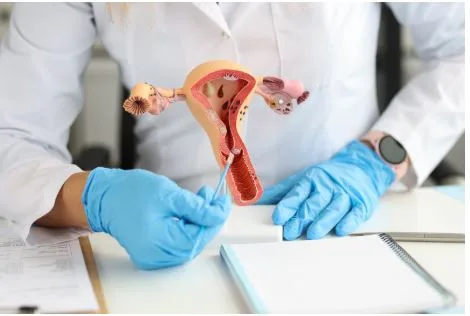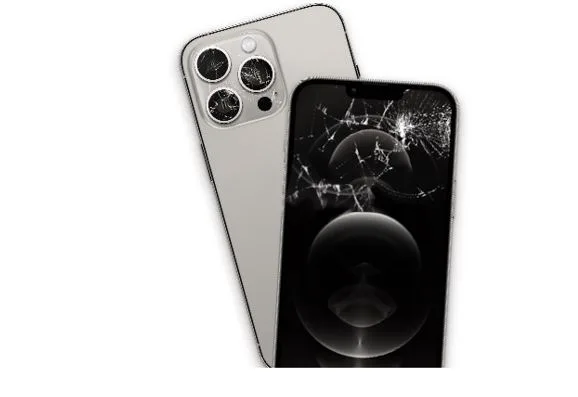What Are the Pros and Cons of Uterine Fibroid Embolization?
Uterine fibroids are non-cancerous growths that develop in or around the uterus, and for many women, they’re more than just a medical term. They’re a daily challenge. From heavy bleeding to pelvic pain, fibroids can significantly disrupt life. One treatment that’s grown in popularity is Uterine Fibroid Embolization, or UFE, a minimally invasive procedure designed to shrink fibroids by cutting off their blood supply.
Like any medical intervention, UFE comes with a mix of benefits and potential drawbacks. It’s not always easy to weigh your options when faced with something so personal, but having a clear view of both the positives and the downsides can help guide the decision.
Pro: Minimally Invasive with No Large Incision
One of the biggest advantages of UFE is that it’s performed through a small puncture, usually in the groin or wrist. A catheter is threaded through the blood vessels to the arteries that feed the fibroids, and small particles are injected to block the blood flow. Since there’s no open surgery, there’s minimal scarring and less trauma to the body.
Most patients go home the same day or after one night in the hospital. That’s a huge relief for anyone who dreads the idea of going under the knife or facing weeks in recovery.
Pro: Shorter Recovery Time
Compared to hysterectomy or myomectomy, which can take several weeks to recover from, most women bounce back from UFE within 7 to 10 days. You may still have discomfort, cramping, or fatigue during that time, but it’s often manageable with over-the-counter pain meds or a short course of stronger medication.
This quicker recovery can be especially important for women juggling work, kids, or other responsibilities. Taking a month off might not be an option, so UFE gives a way to treat fibroids without such a major disruption.
Pro: Preserves the Uterus
For women who want to keep their uterus, whether for personal, cultural, or emotional reasons, UFE provides an alternative to hysterectomy. Even if future pregnancy isn’t a goal, some women just feel more complete keeping their uterus intact.
That said, it’s important to understand that while UFE doesn’t remove the uterus, it also isn’t considered a fertility treatment. Some women have had successful pregnancies afterward, but it’s not guaranteed.
Pro: Effective Symptom Relief
Most women who undergo UFE report significant relief from their fibroid symptoms. Heavy menstrual bleeding often improves, sometimes dramatically. Pelvic pain and pressure usually decrease as the fibroids shrink, and some women notice better bladder control or less bloating.
Studies suggest that up to 90% of women see improvement in symptoms. That level of effectiveness makes UFE a serious contender when deciding on treatment options.
Con: Post-Procedure Pain and Cramping
After UFE, it’s normal to experience cramping, pelvic pain, and flu-like symptoms for several days. This is part of something called post-embolization syndrome, a common response as the body reacts to the dying fibroid tissue.
While the pain isn’t permanent, it can be intense for a short while. Some women need prescription pain meds to manage it. It’s not necessarily worse than surgical recovery, but it may come as a surprise if you’re expecting a totally pain-free process.
Con: Not Ideal for All Fibroid Types
UFE works best on certain fibroids, mainly those that are not too large and that aren’t located in specific parts of the uterus. Submucosal fibroids, which protrude into the uterine cavity, may respond less predictably. Pedunculated fibroids that hang from a stalk may also pose a higher risk of complications.
Before moving ahead with UFE, your doctor will likely recommend an MRI or ultrasound to make sure your fibroids are suitable for the procedure. If not, you might need to explore other options.
Con: Uncertain Effects on Fertility
While some women have gone on to have healthy pregnancies after UFE, the procedure isn’t recommended for women who are actively trying to conceive. Blocking blood flow to the fibroids can affect nearby uterine tissue too, which might impact the uterine lining or ovarian function.
If having children is a top priority, myomectomy is often the preferred route because it physically removes the fibroids while preserving the rest of the uterus. Still, every case is different, and some doctors may support UFE depending on your situation.
Con: Possible Fibroid Regrowth or New Fibroids
UFE doesn’t remove fibroids; it starves them of blood, which usually causes them to shrink. In some cases, they don’t shrink as much as expected or grow back over time. There’s also the possibility of new fibroids forming later, especially if you’re younger or have a strong genetic predisposition.
That’s not to say the procedure isn’t worth it, but it’s something to think about. Some women may eventually need repeat treatment or switch to a different option down the line.
Con: Risk of Infection or Complications
While UFE is generally safe, it’s not without risks. There’s a small chance of infection, blood clots, or damage to nearby organs. Some women experience prolonged discharge or even need a follow-up surgery if complications arise.
In rare cases, the uterus may not tolerate the procedure well, leading to more serious issues. That’s why it’s important to have the procedure done by an experienced interventional radiologist who specializes in UFE and has access to good hospital support.
Pro: Can Treat Multiple Fibroids at Once
One huge perk of UFE over surgical options is that it treats all the fibroids at the same time. You don’t need to have each one removed individually. The particles used in embolization affect every blood vessel feeding a fibroid, so you don’t have to worry that one or two will be left behind.
For women with numerous fibroids, that can be a major selling point. Myomectomy may miss smaller fibroids or leave room for others to grow, while UFE takes a more comprehensive approach.
Con: Lack of Long-Term Data Compared to Surgery
While UFE has been around since the 1990s and has helped many women, it still doesn’t have as much long-term outcome data as more established surgeries. Some studies suggest it has a slightly higher retreatment rate over time, though symptom relief is often excellent in the short term.
Doctors and patients are getting more confident in UFE’s benefits, but if you’re looking for a 20-year outcome, that data is thinner than what you’d find for hysterectomy.
Final Thoughts
Uterine Fibroid Embolization offers real benefits, especially for women who want to avoid surgery or recover quickly. It relieves symptoms, preserves the uterus, and works well for many fibroid types. But it’s not a perfect fit for everyone. If fertility is a concern, or if your fibroids are unusually large or located in tricky areas, you may need to consider other options.
As with any medical decision, the best approach is a conversation with a provider who understands your goals and health history. Every woman’s body and priorities are different. What matters most is choosing the path that fits your life, not just what looks good on paper.





